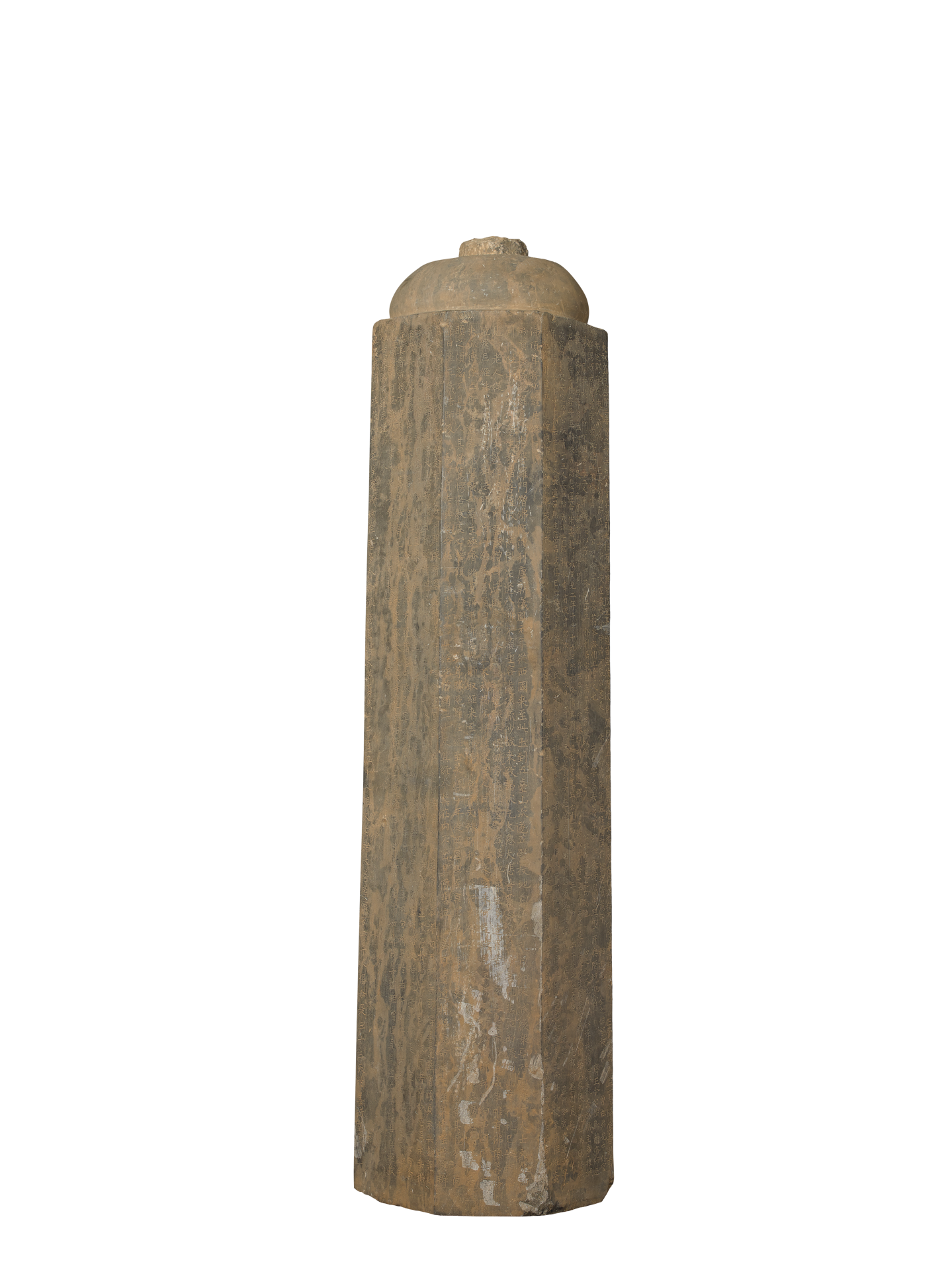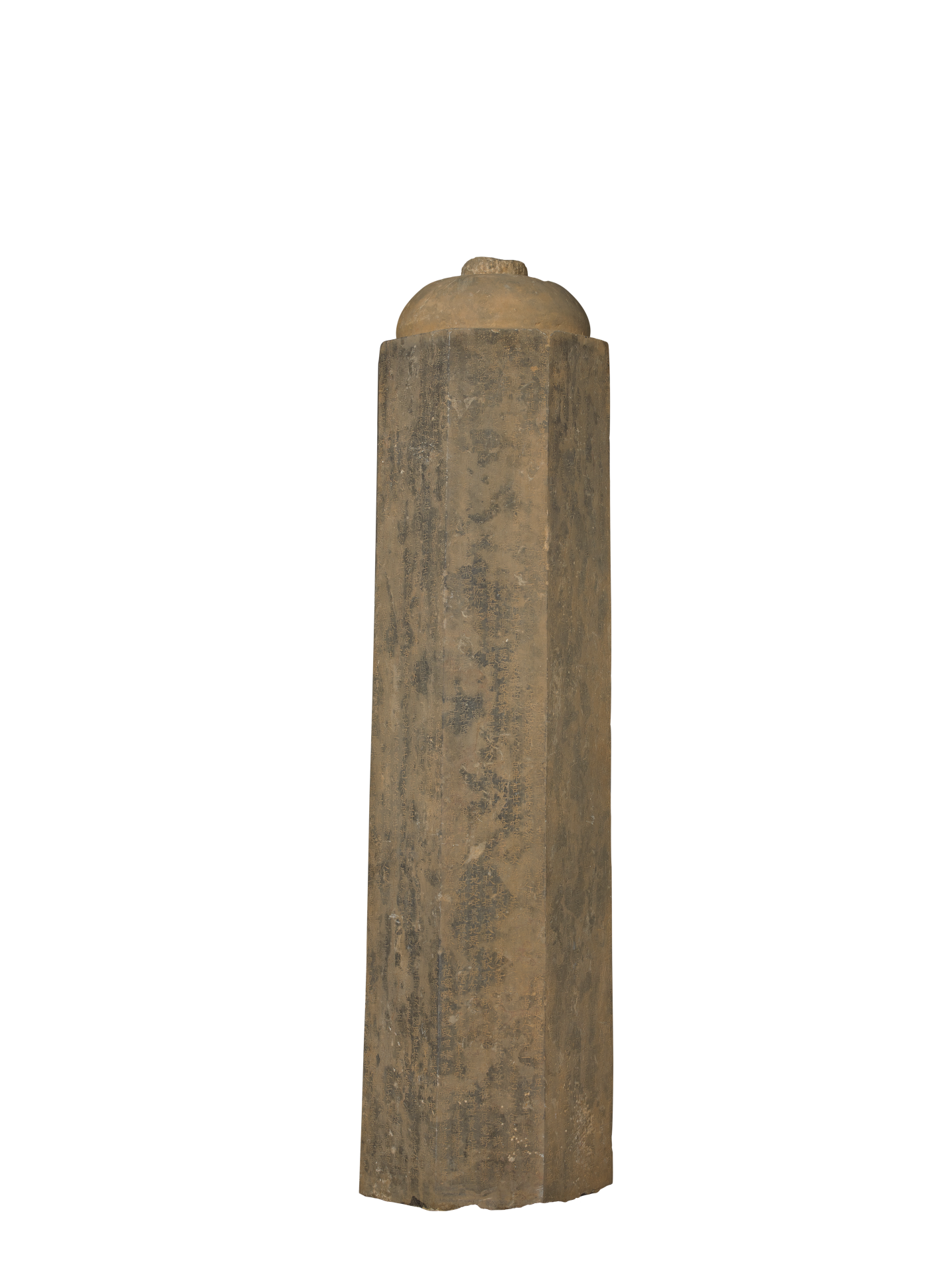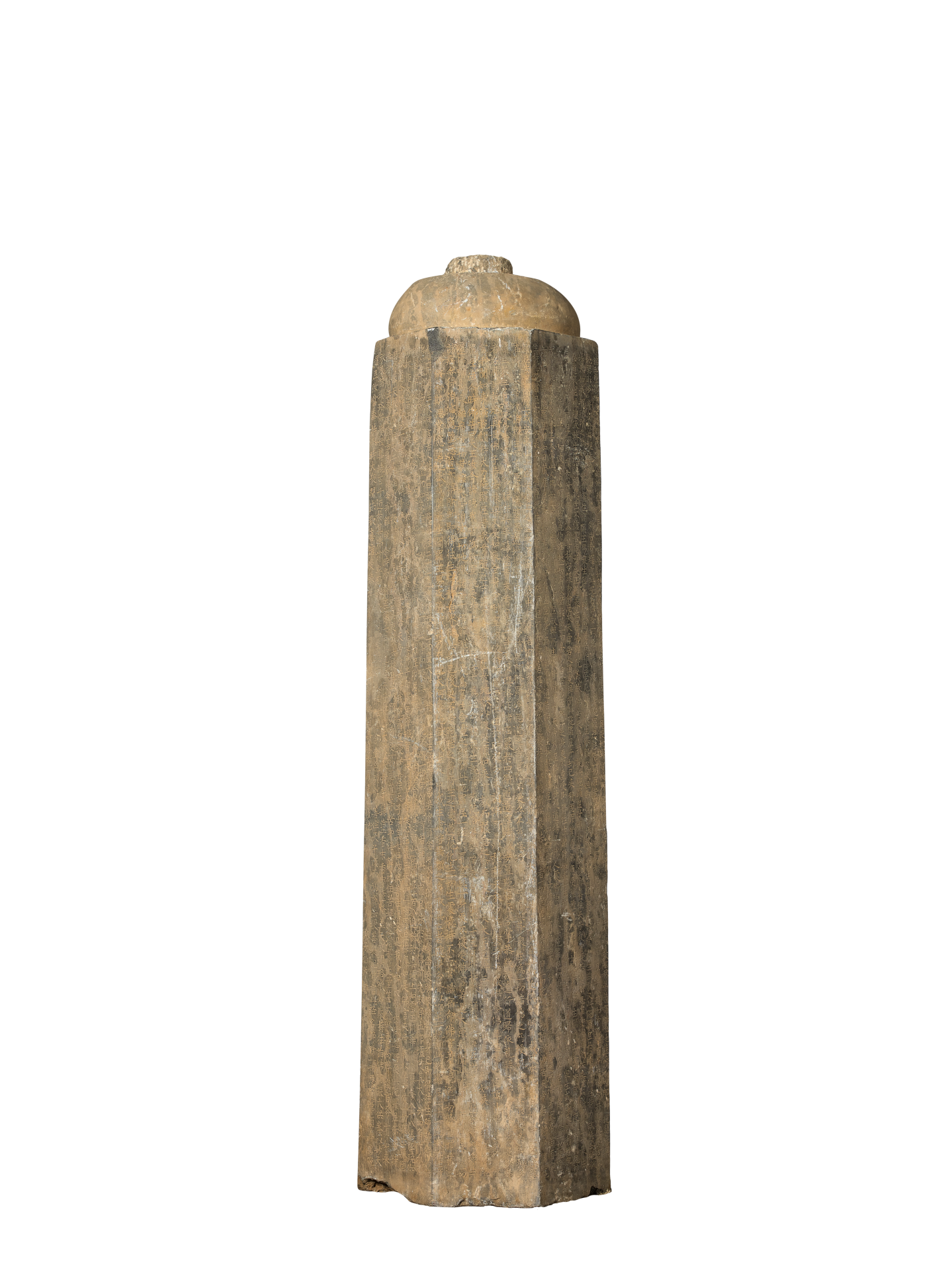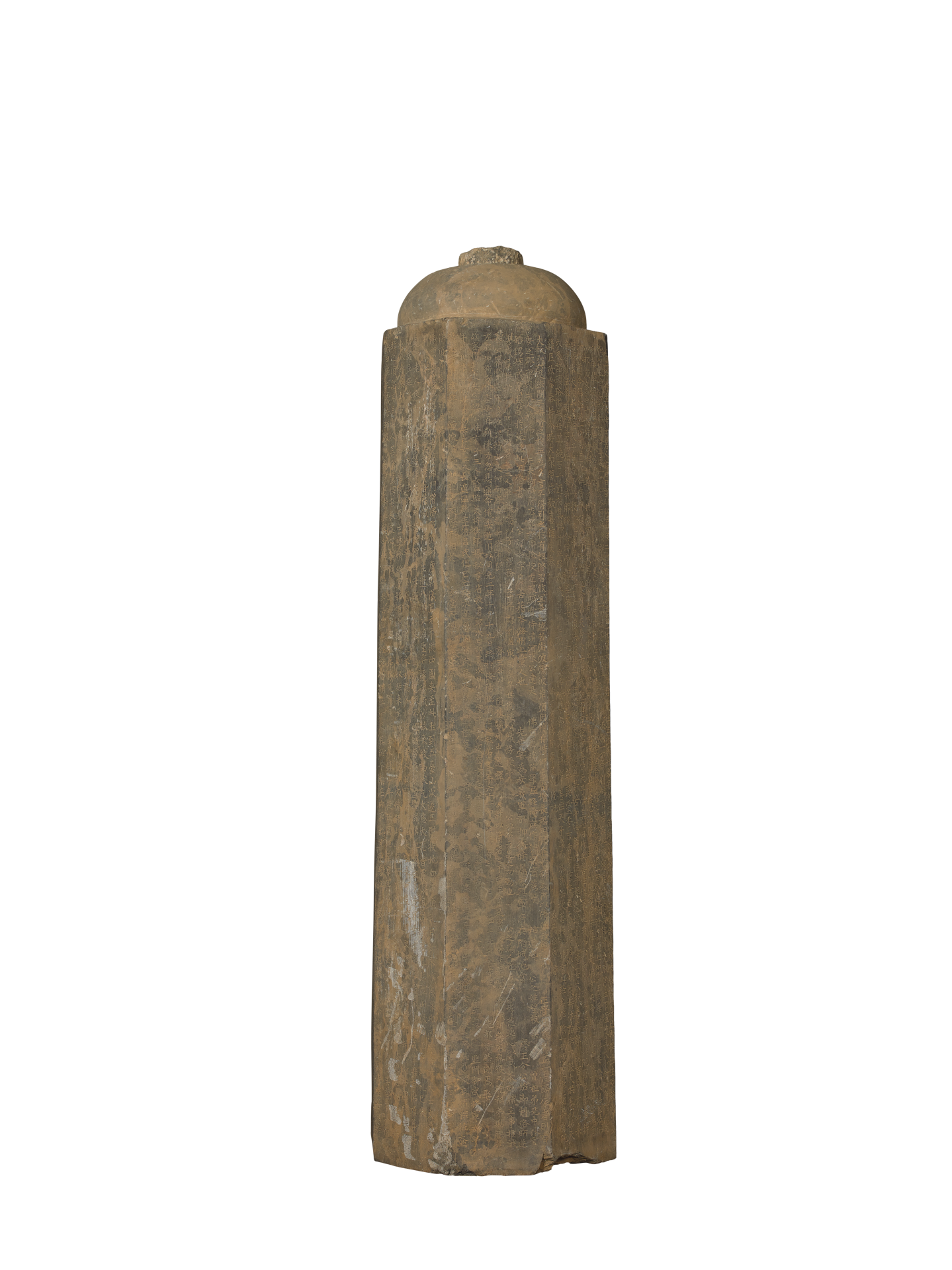Pillar carved with the Uṣṇīṣavijaya dhāraṇīsūtra
This pillar with a hexagonal cross-section and a gem-shaped finial is carved on its eight faces with the Chinese text of the Uṣṇīṣavijaya dhāraṇīsūtra (Sutra of the Victorious Buddha-Crown Mantra), followed by an inscription dated to the 4th year of the Tongguang reign (926 CE) of the Later Tang dynasty (923-937 CE). The Chinese characters are executed in regular script with a slightly elongated shape, a relatively tight structure in the centre, vigorous and forceful strokes beginning with a wedge-head, and angular turns. The characteristic style of Tang dynasty (618-907 CE) stele-style calligraphy is evident. This scripture was first translated into Chinese in the Northern Zhou dynasty (557-581 CE) and subsequently became one of the most popular Tantric Buddhist scriptures in the Tang dynasty. Amongst many extant Chinese versions, the most widely circulated is the one translated by Buddhapāli (active around the second half of the 7th century CE). The scripture carved on this pillar is based on his translation.
According to Buddhist literature, while the eminent Indian monk Buddhapāli was on pilgrimage at Mount Wutai (in China’s Shanxi Province). He had the vision of an old man manifested by Bodhisattva Mañjuśrī, who instructed him to go fetch the Sutra of the Victorious Buddha-Crown Mantra from India and spread the teaching in China to remove the evil karma of sentient beings. During the 1st year of the Yongchun reign (682 CE) of Emperor Gaozong (reigned from 649-683 CE), Buddhapāli brought the Sanskrit version of this scripture to the Tang capital Chang’an and reported this to the Emperor. He was joined by Master Shunzhen (also active around the second half of the 7th century CE) at Ximing Monastery to translate this scripture into Chinese.
According to this scripture, the young deva Susthita knowing that his life would be ended in seven days went to seek help from Śākyamuni. The latter expounded this Sutra to him and instructed him the way to recite it to save himself. Susthita kept practising it for six entire days, and eventually escaped from premature death and enjoyed a long life. This scripture was thus known for its extraordinary power in saving people from death and hell torture, and helping them to be reborn in the Buddhist paradise. The text was subsequently carved onto tall pillars, tall buildings and high mountains. Whoever saw it would have all their evil karma removed. The practice of erecting pillars carved with this Sutra to eliminate disasters and invoke longevity began in the Tang dynasty and continued for centuries through the Liao and Jin dynasties (916-1234).




